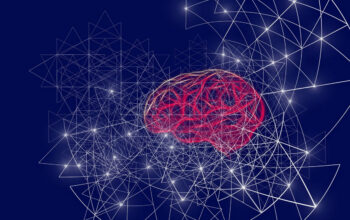In today’s rapidly advancing technological landscape, machine learning has emerged as a crucial field with immense potential. By enabling the development of intelligent systems that can learn from data and make predictions, machine learning has revolutionized engineering. To effectively leverage machine learning, engineers need reliable and efficient software tools. We will look at the top ten best machine learning software and tools for engineers in this post. These tools offer a range of features, benefits, and applications. There is a high demand for machine learning in various sectors, including finance and healthcare. Numerous software options are available, aiming to simplify the machine learning process. We discuss the top 10 software and tools recommended by the engineering community. They facilitate model creation and deployment, allowing engineers to harness the power of machine learning effectively.
As the area of machine learning expands, software engineers are essential in designing and implementing machine learning models. The discussed software and tools have their own strengths and weaknesses. In this article, we summarize the top 10 options, providing valuable insights for engineers looking to advance their machine learning projects.
What is Machine Learning Software?
Machine learning software is a specialized tool or library designed to facilitate the implementation and training of machine learning models. There is a wide range of functionalities, such as data processing, model development, and evaluation.
ML software automates tasks by leveraging algorithms to produce outputs. These solutions are embedded in various information systems and have applications in multiple industries. They improve the speed and accuracy of desired outputs by continuously refining them with more training data. It enhances processes and introduces efficiency in industries such as finance, agriculture, customer service, security risk identification, and collaboration.
There are various types of tools for machine learning available, including general-purpose libraries and specialized tools for specific domains. These software solutions enable users to analyze data, learn from it, and make informed decisions. They are essential in applications like email filtering, computer vision, simulation, recruitment, architecture, and accounting.

Top 10 Best Machine Learning Software and Tools for Engineers
Azure
Azure Machine Learning is a cloud-based service provided by Microsoft that offers a range of features in the field of machine learning. It allows users to pull data from various sources and build ML models using scripting and coding practices that are easy to understand. One key feature of Azure Machine Learning is MLOps, which enables organizations to quickly build, test, and deploy ML models. The software streamlines the ML lifecycle and supports the automation of ML pipelines using Azure DevOps or GitHub Actions. It also offers pre-trained models, and free product add-ons, and is designed to be accessible even for those with limited coding experience. According to the experts from CDR Report Writer, Azure Machine Learning simplifies remote working and provides a code-free, drag-and-drop solution for ML experts. It allows users to create, train, and deploy machine learning models without extensive coding requirements, making it convenient to use.
H20.ai
H2O.ai is an open-source platform that offers a user-friendly experience for businesses. It is highly regarded for being named a visionary by Gartner in the 2020 Magic Quadrant for Data Science and Machine Learning Tools. The platform provides various features like fraud protection, price optimization, and anomaly detection. H2O.ai accelerates data-to-prediction conversion, supports big data, and can be seamlessly deployed on-premises and in the cloud. It stands out for its scalability, compatibility with major programming languages, and transparency. The deep learning platform of H2O.ai includes a scalable artificial neural network that supports popular algorithms. With H2O.ai, organizations can achieve successful AI results, transform how AI is built and consumed, and build applications and AI models. Trusted by over 20,000 organizations globally, H2O.ai serves various industries and offers a 90-day free trial of the H2O AI Cloud.
Google Cloud Platform
Google Cloud AI Platform is at the top of our ranking of the best machine learning software. It provides a whole range of services for developing and deploying machine learning models. With the AI Platform, you can easily scale your training and hosting in the cloud and make predictions based on new data. It brings together various ML services like data preparation, training, tuning, deploying, collaborating, and sharing models. The AI Hub allows you to discover and deploy reusable ML models. The platform also provides features like AI explanations, an easy-to-use interface, and seamless integration with TensorFlow and TPUs. Google Cloud AI Platform is a powerful solution for developers, offering tools like the Cloud Machine Learning Engine, Cloud Vision API, Cloud Natural Language API, and Cloud AutoML. It enables you to create custom ML models, analyze images and text, and build applications for image recognition, natural language processing, translation, and more.
PyTorch
PyTorch is a well-known open-source machine learning tool that focuses on flexibility and dynamic computation graphs. It is widely used for deep learning tasks and offers accelerated processing for tensor computing. With PyTorch, you can build neural networks using the Autograd Module and access a variety of optimization algorithms. It supports distributed training and provides tools and libraries for efficient development. PyTorch is compatible with major cloud platforms, allowing easy scaling and deployment. Popular among universities and companies worldwide, PyTorch is used in computer vision, natural language processing, and reinforcement learning applications. It has interfaces for Python and C++ and offers dynamic graph capabilities for faster tensor computation. PyTorch is a reliable framework for advanced deep learning and neural network applications developed by Facebook.
Keras
Keras is an open-source network library written in Python that was developed by François Chollet. Keras has been used in production systems by companies like Facebook Research and Snap Inc. The library is widely used in production systems at companies like Facebook Research and Snap Inc.’s Snap Labs. It provides a user-friendly API for building and training neural networks with minimal code. Keras offers powerful built-in neural network layers and supports various activation functions. It offers powerful built-in neural network layers, supports different activation functions, and provides tutorials and examples for easy implementation. Keras is known for its growing number of pre-trained models, making it easy for beginners to use even without a deep learning experience. With Keras, you can accelerate your experimentation cycles and leverage the strengths of TensorFlow 2 for scalable deployment on various platforms.
Neural Designer
Neural Designer is a machine learning tool or platform that offers a user-friendly interface and provides tools for building neural network models. It is particularly useful for industries like engineering, banking, healthcare, and retail. Machine learning is particularly important in healthcare, where it enables advancements in diagnosis, treatment planning, disease prediction, and personalized medicine. The platform eliminates the need for programming or building block diagrams, allowing users to develop AI applications without coding.Modern methods are provided for model deployment, feature selection, response optimization, model training, testing analysis, and data preparation. Neural Designer is optimized for handling parameter optimization problems and has efficient memory management for big datasets. It supports both CPU and GPU-optimized calculations. With its user-friendly interface and powerful capabilities, Neural Designer enables users to create AI-powered applications, recognize patterns, and forecast trends by analyzing data. It is a popular choice among public agencies, universities, and innovative companies like Intel and Golomt Bank.
KNIME
KNIME (Konstanz Information Miner) is a free-to-use data analytics and connectivity tool that includes several machine learning and data mining components. It supports programming languages like Python, Java, and more, with which users can perform tasks such as business intelligence, financial data analysis, and CRM. KNIME has a user-friendly interface that makes it easy to understand and operate. However, building complicated models may be challenging, and there are limitations in terms of visualization and exporting capabilities. KNIME allows users to create data science workflows using reusable components and provides a unified workflow from data preparation to analysis and visualization. It offers predefined modules for various data analysis tasks and comes with built-in machine-learning algorithms. KNIME is flexible, scalable, and suitable for users looking for a user-friendly data analytics platform.
Anaconda
Anaconda is a popular machine learning software that aims to simplify package management and deployment. It is widely used by small businesses, freelancers, and big companies like AT&T and Toyota. It offers a range of features to simplify package management and deployment for data scientists and IT professionals. With over 1500 Python and R data science packages, Anaconda provides a comprehensive workspace for statistical programming and machine learning. It includes tools that help collect data from various sources using machine learning and Artificial Intelligence techniques. Anaconda Navigator, a graphical user interface, makes it easy to manage Python modules, packages, environments, and channels without using the command line. With Anaconda, users can set up Python data science applications quickly and easily, with access to a vast library of packages.
Colab
Google Colab, also known as Collaboratory, is a free cloud platform designed for machine learning and data science. It addresses the limitations faced by individuals who may not have access to powerful devices with dedicated GPUs for running complex machine learning models. With Colab, users can leverage the capabilities of libraries like PyTorch, Keras, TensorFlow, and OpenCV. It supports Python and includes popular libraries such as NumPy, and scikit-learn. Colab offers features similar to Jupyter Notebook and allows collaboration among users. One notable advantage is the availability of free GPU and TPU acceleration. The platform integrates with Google Drive, enabling users to access and work on their notebooks seamlessly. Overall, Google Colab is a valuable tool for machine learning education and research, providing a convenient cloud-based environment for building and running ML applications.
Spell
The Spell is machine learning software that specializes in building and managing ML projects, particularly in dynamic and changing environments. It offers features for collaboration and ease of use. Users can use Kubernetes-based technology to set up models, share their code so that projects can be implemented simultaneously, and access cooperative Jupyter workstations. The spell provides simple set-up and onboarding features, making it suitable for shifting and growing teams. It offers intuitive web console tools and command line tools for easy management. With its emphasis on collaboration and usability, Spell aims to facilitate efficient ML project development and deployment. The software is available at a cost starting at $329 per user per month, and there is also a freemium version with $10 of GPU credit available.
Conclusion
In today’s rapidly advancing technological landscape, machine learning has emerged as a crucial field with immense potential. Machine learning software and tools play a crucial role in empowering engineers to develop intelligent systems. The field of engineering has been transformed by machine learning, which allows for the creation of intelligent systems capable of learning from data and making predictions. Engineers require reliable and efficient software tools to harness the full potential of machine learning effectively. From Scikit-learn and TensorFlow to IBM Cloud and Colab, each tool offers unique features and capabilities. By leveraging these software and tools, engineers can enhance their productivity, streamline the development process, and unlock the full potential of machine learning in their projects. These tools offer a range of features, benefits, and applications. Numerous software options are available, aiming to simplify the machine learning process. We have discussed the top 10 software and tools recommended by the engineering community. They facilitate model creation and deployment, allowing engineers to harness the power of machine learning effectively.
Frequently Asked Questions
What are the Primary Applications of Machine Learning Software in Engineering?
Can These Machine Learning Software and Tools be Used by Non-Programmers?
What Is Machine Learning Software?
Are These Machine Learning Software and Tools Free to Use?
Can These Software and Tools be Used by Beginners in Machine Learning?
Which Machine Learning Software is Best for Deep Learning Tasks?
Can These Software and Tools be Used for Both Research and Production Purposes?
Photo by Unsplash




One thought on “Best Machine Learning Software for Engineers”